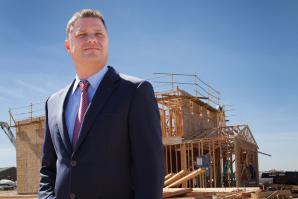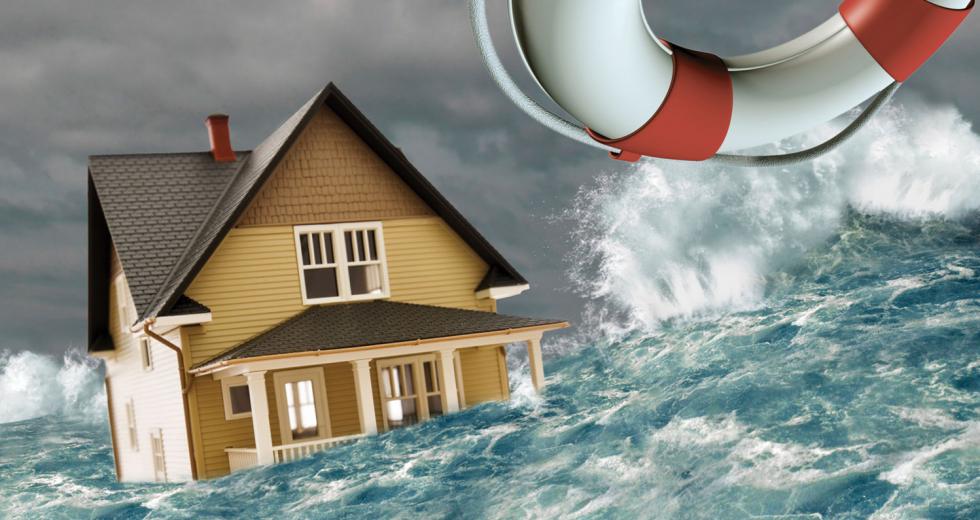Barely a month into Barack Obamas presidency, his administration announced a major effort to help millions of underwater homeowners refinance into mortgages with lower interest rates. But the Home Affordable Refinance Program, or HARP, came with limitations that stifled its effectiveness.
With borrowers and lenders balking, the Obama administration eliminated many of HARPs most onerous restrictions and released a more accessible plan, HARP 2.0. Many local experts, however, say it is far too early to know if the plan will do much to help the Capital Regions economy or its stagnant housing market.
Any refinancing plan that frees up disposable income would, in theory, help the economy, says Ryan Sharp, executive director of the Center for Strategic Economic Research in Sacramento. If people are able to refinance and recycle that disposable income throughout the region, then it will help the overall economy. If not, it wont help very much.
But getting HARP 2.0 to work begins with getting troubled borrowers to use the program.
Anything that helps to fend off foreclosures helps the region. But I think it helps the margins and not much else.
Jeffrey Michael, director, Business Forecasting Center, University of the Pacific
The initial HARP was introduced in 2009 as a means to help certain homeowners with distressed loans backed by the Federal National Mortgage Association (Fannie Mae) or the Federal Home Mortgage Association (Freddie Mac), the two government-secured enterprises that together hold about 60 percent of the country’s mortgages. The idea was to help a very specific group of Fannie- and Freddie-backed borrowers: those underwater with their loans and locked into high interest rates, but who still had good credit and were current with their payments a group thought to be the most likely to walk away from the property.
The Obama administration at the time estimated HARP would help as many as 5 million homeowners.
But there were significant parameters for borrowers and lenders. For one, homeowners could not owe more than 125 percent of the current value of their home a quotient many people who purchased at the height of the housing bubble far exceeded. Lenders also were riled at being required to guarantee that a borrowers original loan met all of their standards, which could have resulted in being forced to buy back refinanced loans later found to be problematic. And anyone whose loan was not purchased by Fannie Mae or Freddie Mac before May 2009 was simply out of luck. With all that, fewer than a million homeowners refinanced via the original HARP.
Although HARP 2.0 still requires Fannie Mae or Freddie Mac to have bought the loan before May 2009, the new rules toss out the 125 percent cap in favor of an 80 percent minimum loan-to-value requirement and eliminate the need for a new property appraisal in locations where a reliable automated valuation model exists.
Lenders are also being granted significantly more leeway around the threat of buying back bad loans. Although the specifics of how that would work were not available at press time, an earlier analysis by Sacramento-based CoreLogic concluded that the buy-back relief would likely focus on the quality of the original appraisal and underwriting. In short, as long as the original loan didnt contain outright fraud and egregious misrepresentation, refinance lenders wont be on the hook for simple procedural errors, in theory making them more likely to write a new loan.
Estimates of how many homeowners will take advantage of the new rules vary widely. Freddie Mac has conservatively estimated HARP 2.0 refinances could be roughly double those done under the original program, while Moodys Analytics Inc. predicts roughly 1.6 million new refinancings. On the other end of the spectrum, a study released by San Diego-based Data Quick in February says the removal of the 125 percent loan-to-value cap alone would qualify up to 6.7 million more homeowners than under the old rules.
Most local economic experts agree that anything that sparks the housing market is good for the future, but perspectives on how much this will impact the Capital Region also vary.
In a statement released after the HARP 2.0 rules were introduced, CoreLogics chief economist, Mark Fleming, predicted that, though the program constitutes a significant economic stimulus on the order of several billion dollars given to borrowers in many of the economically hardest-hit areas, it would have only modest impact on consumption and the economy.
Jeffrey Michael, director of the Business Forecasting Center at the University of the Pacific, also questions how much the new rules would help the struggling housing market.
Anything that helps to fend off foreclosures helps the region, he says. But I think it helps at the margins and not much else.
Part of that, Michael says, is the sheer enormity of the problem. CoreLogic data indicates almost 11 million homeowners nationwide hold a loan worth less than book value, while RealtyTrac says 3.5 million are behind on payments. California is one of a handful of states in which refinancing has been particularly challenging for underwater homeowners. CoreLogic data further indicates nearly half of the homes sold in California in December 2011 were either short sales or bank-owned repossessions.
Some areas are also much worse off than others. Data from the California Attorney Generals Office in February, for instance, showed San Joaquin County with a foreclosure rate of 10.7 percent more than 3 percent higher than Sacramento County. The average San Joaquin mortgage borrower also carried a 175 percent loan-to-value ratio.
HARP is only one of several programs aimed at quelling the foreclosure crisis. The president has also pitched loosening the rules on HARPs sister program, the Home Affordable Modification Program for borrowers near or in delinquency. In his January State of the Union, President Obama further proposed opening HARP 2.0 to distressed borrowers with loans not backed by Freddie Mac or Fannie Mae.
But to pay for doing that, President Obama wants to tax big-ticket financial companies, those with $50 billion or more in assets. That, says UOPs Michael, could be a real struggle given partisan deadlock so common in Congress.
It really would have been good to see something like this sooner, he says. The president should have sent this to Congress when he had control of it.
But even if all of these programs come to fruition, history doesnt bode well for getting the economic impact some are hoping for. At this point in the recession, people are still much more likely to de-leverage rather than to spend. Without that return, a short-term boost may be the only result.
The idea was to help a very specific group of Fannie- and Freddie-backed borrowers: those underwater with their loans and locked into high interest rates, but who still had good credit and were current with their payments.
WILL IT WORK?
Last October, the Obama administration announced it would expand eligibility criteria for the Home Affordable Refinance Program (HARP), most notably by removing the loan-to-value maximum. Under the new program, some homeowners with an 80 percent minimum loan-to-value ratio would be able to refinance without a new appraisal. We asked three real estate experts whether they think the changes will significantly improve our regional market.
Karen Saenz
realtor
Coldwell Banker, Sacramento
No, I dont. As much as you will hear sellers say, Im trying to work with the bank and to lower my payment, a lot of them still have the same income, and they are just worn out. They were the conservative ones who tried to wait it out, to do the right thing. But its gone on now year upon year upon year, and these people are finally asking themselves, Do I want to carry this debt and keep making payments that go to nothing for another 10 years? So we might be offering what we call an affordable refinance, but would you want to be paying for another 10 years on a $300,000 loan on property that may only be worth $240,000?
Gary Hurst
senior loan consultant
Pacific National Lending, Rancho Cordova
I am cautiously optimistic. If it happens, it will definitely help stop foreclosures and generate income to both banks and mortgage brokers. I say if it happens, because last time, with the original HARP program, they said they would be going up to 125 percent loan-to-value, but that didnt happen. It was really only about 105 percent, which makes a very big difference. But exactly how much stabilization of the market will occur as a result is uncertain because HARP 2.0 does nothing directly to stimulate housing demand for new borrowers and investors or reduce high inventories of distressed properties.
John Arvanitis
owner and president
Sunrise Vista Mortgage, Citrus Heights
It could, but there are too many moving parts at this time to know for sure. One big question is how many investors are going to play? With the original HARP, about 80 percent of the investors out there didnt play. If you were able to go up to 125 percent of loan value then and the investors wouldnt come in, how many can you expect to come in now? And what about all the portfolio loans being held by Wells Fargo, Chase, GMAC (Mortgage) and others that are not held by Fannie or Freddie? That is a key component here. There are a lot of people out there who have their loan held by someone other than Freddie or Fannie, and those people dont have a program for them.”
Recommended For You

Under One Roof
Can rapid rehousing save local homeless families from life on the streets and in shelters?
Though a new rapid rehousing initiative may stymy the troubling trend locally, some providers remain concerned that a lack of mandatory supportive services and intensive case management may cause the program to exacerbate, not eliminate, the problem.

Building Optimism
Acuity with Michael Strech
In October 2012, Michael Strech, 49, was named president and CEO of the North State Building Industry Association. The group is a community-based organization representing more than 400 homebuilder and associate members. From 2003 to 2009, Strech served as the vice president of member services for the California BIA.



